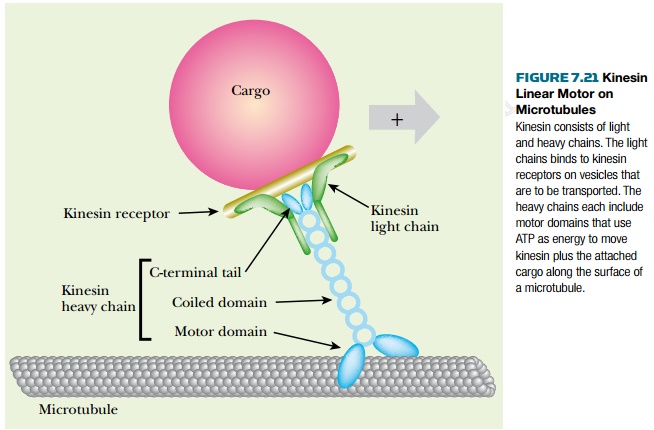Chapter: Biotechnology Applying the Genetic Revolution: Nanobiotechnology
Biomolecular Motors
BIOMOLECULAR
MOTORS
A major aim of nanotechnology
is to develop molecular-scale machinery that can carry out the programmed
synthesis (or rearrangement) of single molecules (or even atoms), or other
similar nanoscale tasks. The term (nano)assembler
refers to a nanomachine that can build nanoscale structures, molecule by
molecule or atom by atom. And the term (nano)replicator refers to a nanomachine able to build copies of itself
when provided with raw materials and energy. This, of course, sounds remarkably
like a living cell. Indeed, the organelles of living cells may be regarded as
nanomachines and have provided both inspiration and components for
nanotechnologists.

To operate, nanomachines will
need energy, which will be provided by “molecular motors.” At present such
devices are still in development. It has been suggested that biological
structures might be used for this purpose. Examples include the ATP synthase,
the flagellar motor of bacterial cells, various enzymes that move along DNA or
RNA, and assorted motor proteins of eukaryotic cells. Several of these systems
are presently being investigated in the hope of making usable nanodevices that
can be coupled to nanomachines to provide energy and/or moving parts.
The ATP synthase is a rotary
motor whose natural role is to generate ATP. It is embedded in the
mitochondrial membrane and uses energy from the proton motive force. The ATP
synthase takes three steps to complete each rotation, and at each step it makes
an ATP. For use in nanotechnology, the F1 subunit would be detached from the
membrane and run in reverse (i.e., it would be given ATP as fuel and, from a
biological perspective, rotate backwards).
Kinesin and dynein are motor
proteins that use ATP as energy to move along the microtubules of eukaryotic
cells. They therefore act as linear step motors (Fig. 7.21). Their natural role
is to transport material. Kinesin moves cargo from the center to the periphery
of the cell, whereas dynein carries cargo from the periphery to the center.
Kinesin takes steps of 8 nanometers and can move at 100 steps per second
(approximately 3mm/hour!). Each step consumes one ATP for energy. The
microtubules they use as tracks are protein cylinders with an outside diameter
of 30 nm.
Related Topics